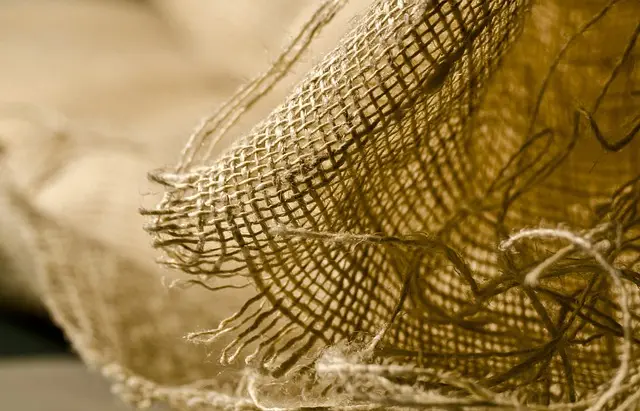Red Bali Kratom and Maeng Da Kratom are two popular strains used for their potential medicinal and stimulant effects. While they share common benefits such as pain relief, mood enhancement, and increased energy, each has distinct characteristics. Red Bali Kratom is known for its sedative qualities, making it a preferred choice for those seeking relaxation or aid in sleep. On the other hand, Maeng Da Kratom, often considered more potent, offers a balance between stimulation and sedation, which can be beneficial for managing both physical and mental stress without causing excessive drowsiness. Users typically prefer Red Bali for its soothing effects at higher doses and Maeng Da for a more balanced experience at lower to moderate dosages. When comparing these strains, it's essential to consider personal tolerance and the desired effect as individual experiences may vary, and the best choice depends on personal needs and preferences.
Muscle soreness, a common consequence of intense physical activity, can hinder athletic performance and daily comfort. Exploring effective relief strategies, this article delves into the potential benefits of kratom supplements, particularly comparing Red Bali Kratom and Maeng Da Kratom for their roles in alleviating muscle pain. By understanding the impact of muscle soreness on physical endeavors and examining the efficacy of these kratom varieties, readers can gain insights into incorporating these natural supplements into their recovery regimen. Join us as we navigate the intersection of natural remedies and athletic performance optimization.
- Understanding Muscle Soreness and Its Impact on Physical Performance
- Red Bali Kratom vs. Maeng Da Kratom: Analyzing Their Role in Muscle Soreness Relief
- Effective Muscle Soreness Relief Strategies Incorporating Kratom Supplements
Understanding Muscle Soreness and Its Impact on Physical Performance

Muscle soreness, often referred to as delayed-onset muscle soreness (DOMS), can significantly impact an individual’s physical performance and overall well-being. This discomfort typically arises following intense exercise or unaccustomed physical activity. It is characterized by pain, tenderness, or stiffness in the muscles, which can hinder one’s ability to engage in subsequent workouts at full capacity. The mechanisms behind muscle soreness are multifactorial, involving inflammatory responses and muscle damage due to micro-tears in the muscle fibers. Understanding the root causes is essential for developing effective relief strategies.
In the realm of natural supplements, kratom has garnered attention for its potential role in alleviating muscle soreness. Two particularly notable strains within the kratom species are Red Bali and Maeng Da. Both are commonly used for their analgesic properties. Red Bali kratom is known for its sedative and pain-relieving effects, which may be beneficial for managing muscle soreness and promoting relaxation after physical exertion. On the other hand, Maeng Da kratom is celebrated for its strong stimulating and painkilling effects, which could help in managing acute pain while maintaining energy levels necessary for continued physical activity. When considering these strains, it’s important to use them responsibly and within recommended dosages, as per the guidance of a healthcare provider. Proper hydration, rest, and nutrition are also crucial complements to using kratom for optimal recovery and to ensure that muscle soreness does not impede physical performance over time.
Red Bali Kratom vs. Maeng Da Kratom: Analyzing Their Role in Muscle Soreness Relief

When exploring the realm of natural remedies for muscle soreness, Red Bali Kratom and Maeng Da Kratom emerge as two prominent contenders. Both are strains of Mitragyna speciosa, commonly known as kratom, which has garnered attention for its potential analgesic properties. Red Bali Kratom is renowned for its relaxing effects, thought to stem from higher concentrations of 7-hydroxymitragynine compared to mitragynine, another key alkaloid. This combination is often sought after by individuals looking to relieve muscle soreness due to its sedative qualities, which can help in managing discomfort and promoting a state of calmness. On the other hand, Maeng Da Kratom, translating to “Pimp Grade” or “Matured Leaf,” is celebrated for its balanced alkaloid profile that offers both stimulating and analgesic effects. This balance may contribute to its efficacy in addressing muscle soreness by providing pain relief without overwhelming sedation, thus allowing for a more dynamic approach to recovery. Users of Maeng Da often report a sustained energy level alongside the pain-relieving benefits, which can be beneficial for those engaging in physical activities that require both endurance and recovery support. When comparing Red Bali Kratom versus Maeng Da Kratom for muscle soreness relief, it’s important to consider personal preferences and the nature of the soreness experienced. Both strains have distinct effects and can offer significant relief, but their unique alkaloid profiles may make one more suitable than the other depending on the individual’s specific needs and the intensity of muscle soreness they are managing. Users should always approach kratom use responsibly, adhering to appropriate dosage guidelines and consulting with a healthcare provider when integrating kratom into their wellness routine.
Effective Muscle Soreness Relief Strategies Incorporating Kratom Supplements

muscle soreness, physical performance, kratom supplements, Red Bali Kratom, Maeng Da Kratom, muscle recovery strategies, alleviate discomfort.
In conclusion, muscle soreness can significantly impede an individual’s physical performance and overall well-being. However, the strategic use of natural supplements such as Red Bali Kratom and Maeng Da Kratom may offer effective relief from muscle soreness. These potent strains have distinct properties that can be harnessed to enhance recovery and maintain peak athletic performance. By integrating these kratom supplements into a comprehensive muscle soreness relief strategy, individuals may experience notable alleviation of discomfort, thereby supporting their continued engagement in physical activities. As with any supplement regimen, it is advisable to consult healthcare professionals for personalized advice tailored to one’s unique health needs and circumstances.






